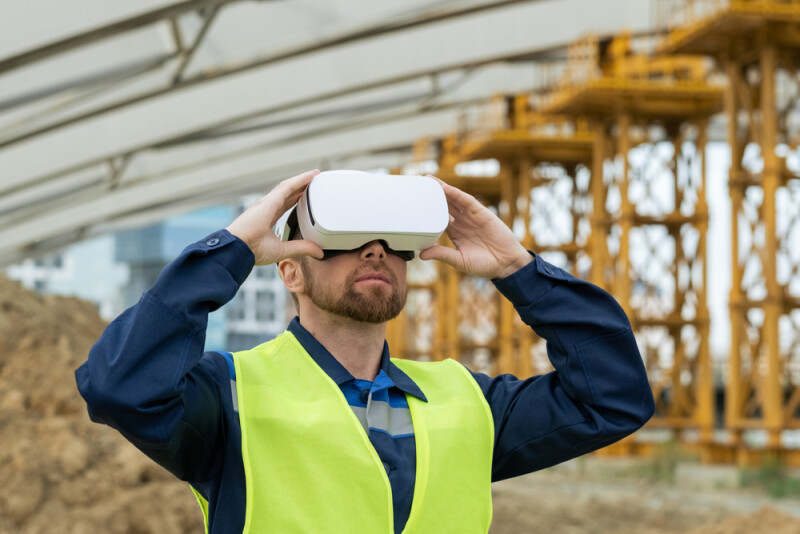The last few years has seen a steady uptick in the usage of virtual and augmented reality within industrial sectors, with this past year marking major advancements in the space. The year started with the release of Apple’s Vision Pro headset – though, in the eyes of many, that first-generation product has flopped. Even so, there has been more attention on the space, and many headsets have become much more affordable, offering an onramp for interested firms. Giving a more immersive view, these tools have been used to improve collaboration, enhance training, and offer greater insight to a project.
One of the companies leading the way in bringing these tools to enterprise workplaces has been Unity. It shouldn’t come as a surprise that many of the leaders in advanced visualization techniques in industry sectors are more known as gaming companies, as much of the capabilities offered by mixed reality are taken directly from the gaming industry. At Geo Week News, we’ve written quite a bit about Unity’s software being used in the geospatial and AEC industries, including this conversation with Unity’s Rory Armes and this one with Esri’s Rex Hansen.
Earlier this month, Unity released a new report highlighting the trends around the “use and adoption of immersive technology” in the coming year. The report takes insights from Unity customers who are involved in this space, and while the entire report is not necessarily relevant to our industries – there is a heavy focus on the medical sector, for example – there are a lot of great takeaways. Below, find three of our biggest takeaways from the report.
Training and Troubleshooting
It’s one thing to say that industries should be embracing mixed reality, but it’s not always clear on how exactly these tools should be used. For many use cases within the enterprise space, particularly for factories and other large-scale facilities, the most powerful use case can be for training and troubleshooting. On the former point, the team from ForegeFX Simulations wrote about the power for training solutions for these industries using mixed reality. There is a lot that goes into running the machines in many facilities, and training can be very costly – sometimes requiring shutting down sections of the floor for hands-on experience. That can be significantly cut down if much of that training happens in a virtual environment before finishing up in the physical world. They also mention the potential for gamifying training leading to better engagement and retention of the material.
In a separate section, Ingeun Lee from HD Hyundai Infracore talks about the immersive troubleshooting abilities brought about by these tools. As they point out, the machines within industries like manufacturing and construction are becoming increasingly sophisticated. This, of course, brings many possibilities for what the machines can do, but also makes them much more complicated to fix when something goes wrong. Lee talks about the ability of augmented reality to help improve passing along troubleshooting possibilities, ultimately limiting downtime for these important machines.
Importance of Education
Usman Ghias from DB System GMBH talked about the power of this technology in a different section, but also noted the importance of educating your team about how to maximize the tools. He noted that his company is “integrating game technology with rail industry expertise,” with the biggest lesson he’s learned being “the importance of defining requirements clearly and finding the right balance.” While this is gaming technology, the users also different tremendously, and it’s important to focus less on the graphic quality and physical effects, and more on the practical and tangible benefits from these workflows.
A Changing Landscape
If there was one overarching theme throughout this report, it would be that we seem to be entering a new era of advanced visualization in the enterprise sector. For years, it’s been about championing the potential, but as hardware becomes cheaper, adoption is spiking and the industry is entering the stage. Jay Wright from Campfire talked about the software side of the sector in many ways exemplifying this idea. Now that the hardware is powerful enough at a cheap enough price point to entice these new industries, the software is starting to follow suit. He draws parallels between the PC boom of the late 20th century, and how eventually desktop software developers took advantage of the tools. The XR app developers haven’t quite gotten to that point, but it appears we’re heading in that direction.






